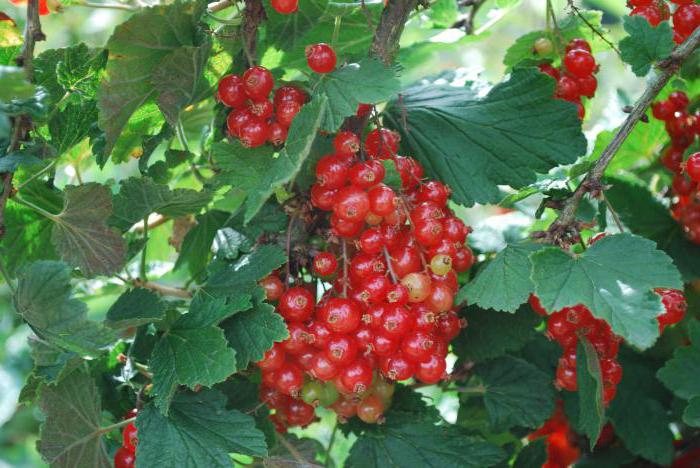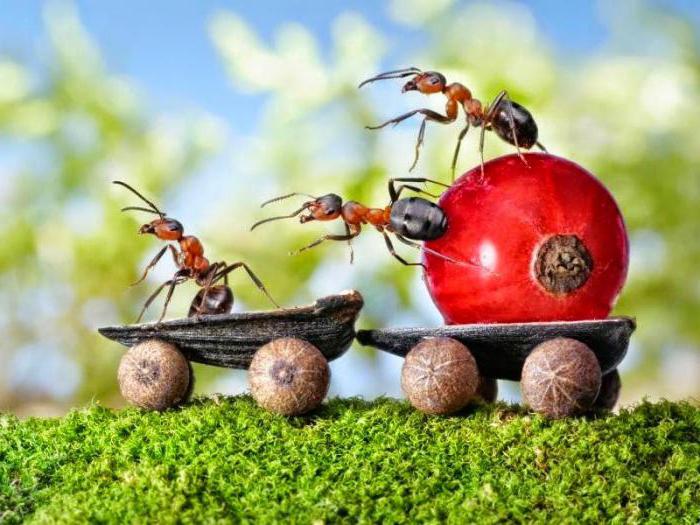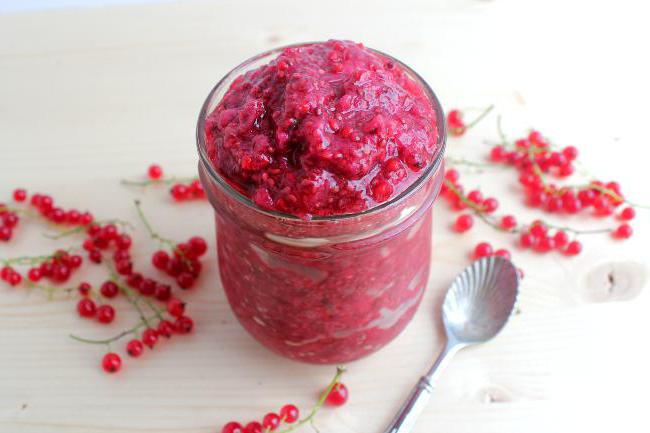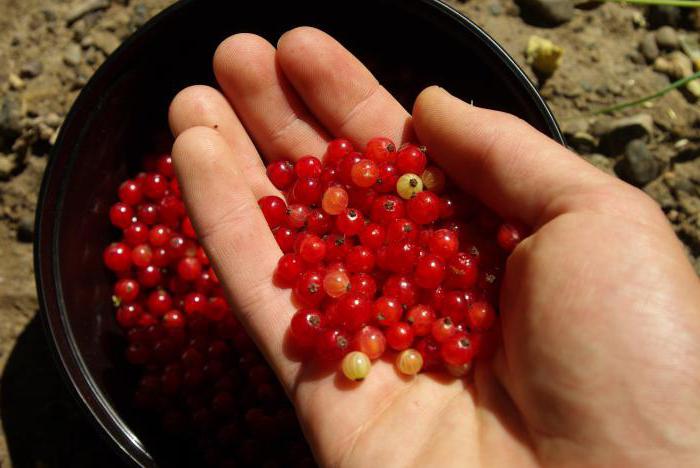Beautiful spreading bushes on which small red berries are generously scattered are familiar to every person. Many of us like to please ourselves with a sour delicious from freshly picked branches or enjoy the taste of compotes, juices and jams from it. “Berry of Life” - this honorable title has been wearing red currants for many centuries, the benefits and harms of which are described in the article below.
What is this berry?
Means for maintaining beauty, improving health and prolonging life. And all this is also red currant, the benefits and harms of which have been known since ancient times to our ancestors. It was often used in folk medicine, especially in the northern and western parts of Russia, where it is most common. Nowadays, currants are called "Ivanovo berry", because it ripens for St. John's Day - June 24. She is also called the “creek” due to the fact that in the wild she loves to grow along the banks of the river.

The currant bushes are unpretentious, they tolerate frosts well and give a generous harvest. Therefore, planting them in large quantities is not necessary. One bush is enough for one small family: with quality care, it is able to bring 10 kilograms of berries. Harvested fruits are not recommended for a long time to be stored in the refrigerator - they may become sour. Therefore, it is better to freeze them or grind with sugar. For cooking, use not only berries, but also red currant seeds - the benefits and harms of them are the same as those of fruits.
Chemical composition
Redcurrant is rich in B vitamins, including riboflavin, thiamine, pyridoxine, folic and pantothenic acids. It has a thousand times more antioxidants than any other berry. Of course, it is inferior to blackcurrant in the amount of ascorbic acid, but it has a lot of pectin and carotene, so it removes toxins and toxins from the body so well. Also, the fruit contains many trace elements, such as iron, magnesium, phosphorus, sodium, calcium and potassium.
Red
currant is often used for weight loss
. The calorie content, benefits and harms of berries are known to every nutritionist. If the obese person has no particular contraindications, he is recommended to enrich the diet with it. First, only 43 kcal per 100 grams of fruit. Secondly, as we have already seen, they contain many useful substances, which, among other things, contribute to the acceleration of metabolism. In addition, currants contain a lot of phenolic compounds, organic acids, dietary fiber and sugars, which makes it an invaluable food product for adults and children.
Immunity increase
Since the berries contain a large amount of ascorbic acid, it is recommended to use it for young children, often suffering from colds and flu. Fruits increase the level of immunity, improve the body's resistance, which in the cold season is susceptible to attack by viruses and bacteria. For the same purpose, red currant is needed during pregnancy. The benefits and harms of the berry will be told by a gynecologist or specialist. If the future mother does not have problems with the digestive system, she will be advised to include natural fruits in the diet instead of the same vitamin C from the pharmacy.
Beta carotene is also present in the product. And he, as you know, is also an agent that promotes the development of immunity. In the body, paired with ascorbic acid, it seems to create an invisible shield that can protect against pathogenic microbes getting inside. It is clear that strong immunity helps to cope not only with colds infections, but also with intestinal and other diseases.
The cardiovascular system
The effect on this part of the body is one of the strengths possessed by red currants. The health benefits and harms in it are disproportionate: the first is much more than the second. It is especially recommended for diseases of the CVD. A powerful therapeutic effect is exerted by such substances:
- Potassium - he plays a major role in normalizing the functioning of the heart muscle.
- Iron - stimulates the formation of hemoglobin, promotes the process of blood formation.
- Coumarins - prevent a heart attack, stroke and blood clots. They dilute blood well.
- Pectins - prevent the penetration of cholesterol into the intestines, protect against atherosclerosis.
Now you know
how currants are useful for “cores”. They simply vital that the fruits were present on the table in great abundance. In winter, you can drink compotes, relish with jams, fragrant jams and desserts, for the preparation of which frozen or grated berries are used with sugar.
Benefits for vision and stomach
The prevention of ophthalmic diseases is another "area of activity" of red currant. All the same beta-carotene, which is present in the fruit, directly affects the sensitivity of the eye. In a word, this substance promotes the collection of light on the retina of the visual organ. If in equal quantities there is currant and blueberry, which is also very useful for the eyes, you can not only improve the visual apparatus, but also prevent many problems associated with it.

Red currant is also recommended for improving the gastrointestinal tract. The benefits and harms of her here, however, are practically balanced. In this case, you need to consult a doctor so as not to harm yourself and not aggravate the problem. For example, a berry will be an ideal tool to stimulate intestinal motility and increase the secretion of digestive glands. It can also be used for constipation and gastritis with low acidity. Berry juice helps to remove salts and toxins from the body, and can also be used as a local hemostatic. At the same time, it should not be consumed by those who suffer from a stomach ulcer and gastritis with high acidity.
Other properties of currant
All of the above is far from a complete list of berry properties. What is useful currant yet? Firstly, it normalizes hormonal levels due to iodine: it acts on the thyroid gland. She begins to work in the right direction, producing the necessary hormones for the life of the body. Secondly, fruits are a source of vitamins and, therefore, energy. All substances contained in the berry are easily absorbed. And even the sugar that is present here is good for health, as it is presented in the form of fructose. It does not burden the pancreas, so currants are recommended even for diabetics.

Thirdly, berries are a cancer preventative. That's because they have Vitamin E - a powerful and effective antioxidant. Together with beta-carotene and ascorbic acid, it is able to work miracles, preventing the development of malignant tumors. In addition, currants have anti-inflammatory properties. Compress from fruit juice is often applied to affected areas of the skin, thereby relieving redness, itching and unpleasant peeling.
Contraindications
These two concepts have already become synonymous: redcurrant - good. And harm would seem to be completely ruled out. But no. There are a number of diseases in which the use of fruits is extremely undesirable. Contraindications are: gastritis with high acidity, stomach ulcer, hepatitis and hemophilia.

In addition, berries are banned for people with food allergies. This is especially true for babies: often up to 2-3 years they do not tolerate any red berries: raspberries, cherries, strawberries and red currants. The use of berries causes them to have redness of the skin, rashes, itching, and indigestion. To check for allergies, it’s enough to give the child a couple of drops of juice and watch his condition. If it has not changed, you can slowly introduce red currants into the diet. By the way, there are many people whose body does not accept fresh fruits, but they can safely eat dishes prepared from them that have been heat-treated: stewed fruit, preserves, desserts. In this form, red currants are not terrible for them, the health benefits and harms of which are described above.
You did not know about it
Red currant was always in price. In ancient times, the berry was called the "monastic fruit", as it was grown near monastic cells and other religious buildings. Again, exclusively for medicinal purposes. Even then, representatives of the clergy noted that unripe currants are of great benefit. Indeed, when the technology has developed enough to check the chemical composition of the product, it was found that there is more vitamin C in unripe currants. And not only him.

When picking berries from a bush, do not throw leaves - they also contain many substances necessary for humans. Of these, it is recommended to make decoctions and tinctures from various diseases. To find out interesting recipes, take a look at any encyclopedia of traditional medicine and medicine: there is a detailed description of red currants, the benefits and harms, the preparation of miraculous elixirs from berries, their proper use. Remember that the fruits are honey plants: a sweet product from them can be used as a prophylactic and therapeutic agent during seasonal colds. In addition, currant makes delicious sauces in cooking, and natural food colors from its juice.